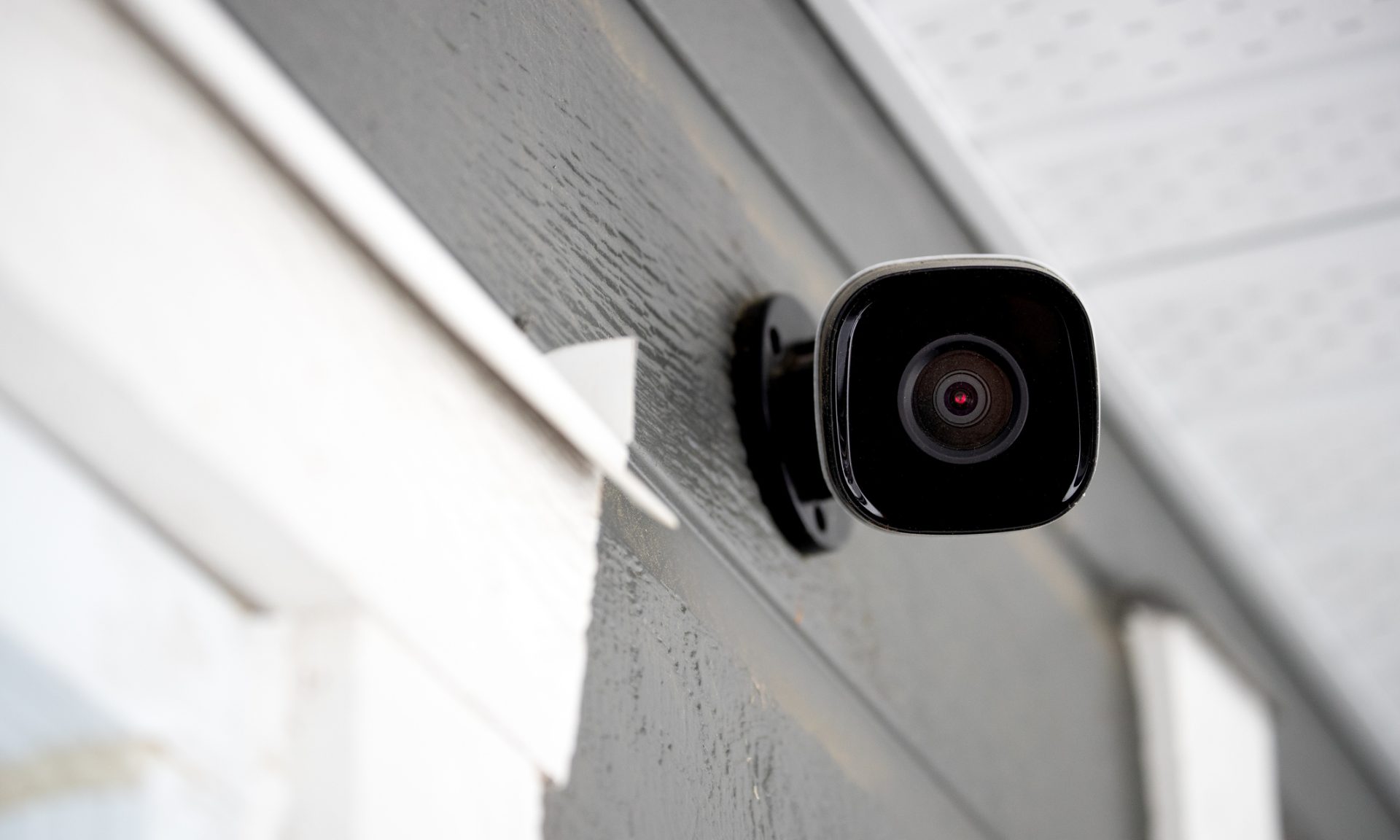Security Camera Installation: 4 Mistakes to Avoid
Security cameras can make your home feel safer, but keep privacy and obstructions in mind.

Some or all of the mortgage lenders featured on our site are advertising partners of NerdWallet, but this does not influence our evaluations, lender star ratings or the order in which lenders are listed on the page. Our opinions are our own. Here is a list of our partners.
Security camera installation is a key component of creating a strong security system. Cameras can alert you to and record suspicious activity, and they can even use lights or noise to deter intruders. But be sure to avoid common security camera installation mistakes that can damage your camera, reduce visibility or even create privacy issues with your family and neighbors.
You can install security cameras indoors or outdoors, and they can be plug-in, wireless or both. There are infinite options for security camera placement, depending on the layout of your home, but not all placements are created equal. Here are some common errors to avoid when installing security cameras.
1. Privacy violations
Though the point of a security camera is to keep a closer eye on your property, there is such a thing as too much visibility. Cameras in places such as bedrooms and bathrooms can violate someone’s “reasonable expectation of privacy .” State laws differ, but in general, it’s illegal to record someone without their consent in these spaces .
The expectation of privacy also applies to cameras looking into a neighbor’s property, especially if they’re hidden or you don’t tell the neighbors you’re surveilling them. They might have the right to legal action if the camera points into areas with a reasonable expectation of privacy .
Though it likely won’t be an issue if some of your neighbor’s yard, for example, is visible from your outdoor camera, many camera providers, such as Ring, have a “privacy zone” feature that allows you to block out certain areas of the camera’s field of view.
2. Hiding the camera too much
It might seem like a good idea to install cameras facing a hard-to-see location such as a side alley or an upstairs window, but according to data from home security company ADT, most intruders enter through the front door, back door or an open first-floor window . It’s often most important to install cameras in view of those high-traffic areas.
Also, hard-to-see locations might have more obstructions, such as an AC unit or overhang, that partially block the view of the camera. Look out for fast-growing trees and bushes, too, that can eventually grow in front of the camera’s view field.
Hiding the cameras themselves may also be counter-productive: a 2013 study led by a researcher from the University of North Carolina at Charlotte Department of Criminal Justice and Criminology found that most intruders check to see if a home has cameras or other alarm technology before attempting a burglary .
3. Overexposure to heat, water and debris
The location of your security camera can make a big difference in its lifespan. Placing an electronic device in direct sunlight or near vents or heaters can damage the batteries or melt the adhesive if it’s a stick-on camera. Vents can also quickly cover your camera in dust or debris, reducing the visibility of the lens.
Also, only use designated outdoor cameras outside. Outdoor cameras have special features such as water resistance and durable construction so they can withstand the elements, and some, such as Blink, even offer weather-resistant plugs to connect to outdoor outlets.
4. Wrong motion detection range
Many security cameras use passive infrared technology to detect motion, which needs a specific distance range, angles and lighting to work properly. Detection range can vary by brand, but is typically around five to 20 feet from the camera.
Make sure to angle your camera down from above — some home security providers recommend installing security cameras at a height of around seven to 10 feet — for prime motion detection. Installing a security camera higher up can also prevent tampering. Angling up from below, on the other hand, may be more likely to trigger alerts for cars, birds or waving trees.
Also, don’t use an indoor camera to monitor outdoor areas through a window. The glass can block the infrared motion detection, and sun glare can throw off the camera’s view.
Frequently Asked Questions
What is the average labor cost to install security cameras?
Installing security cameras is likely to cost about $100 to $200 per camera. Ring and Arlo install partner HelloTech, for example, charges $99 to install Ring cameras. Your actual cost to install security cameras can vary depending on the type of camera, number of cameras, installation location and power source (wired or battery). Devices that need to be hardwired, such as a video doorbell or floodlight camera, may cost more to install.
Do I need an electrician to install security cameras, or can I install my own security cameras?
For many cameras, you don’t need an electrician. Many home security providers offer security cameras that you can install yourself with adhesives, minor screw-ins or drilling. However, some providers, such as Vivint, require professional installation for their systems.
If you’re planning to install a security camera in a hard-to-reach place or hardwire it into your home’s electrical system, it may be worth it to hire a security installation professional who can handle the electrical components and advise you on placement.
Who would install security cameras?
Electricians can install security cameras, but there are also designated security system professionals who partner with popular home security companies to install their equipment.
Article sources
NerdWallet writers are subject matter authorities who use primary,
trustworthy sources to inform their work, including peer-reviewed
studies, government websites, academic research and interviews with
industry experts. All content is fact-checked for accuracy, timeliness
and relevance. You can learn more about NerdWallet's high
standards for journalism by reading our
editorial guidelines.
- 1. Cornell Law School. reasonable expectation of privacy. Accessed Sep 9, 2024.
- 2. Cornell University Legal Information Institute. 10 U.S. Code § 917a - Art. 117a. Wrongful broadcast or distribution of intimate visual images. Accessed Sep 9, 2024.
- 3. Cornell University Legal Information Institute. 18 U.S. Code § 1801 - Video voyeurism. Accessed Sep 10, 2024.
- 4. ADT.com. How Do Burglars Break into Houses?. Accessed Sep 9, 2024.
- 5. Sage Journals. Exploring and Understanding Differences Between Deliberate and Impulsive Male and Female Burglars. Accessed Sep 9, 2024.
More like this
Related articles






